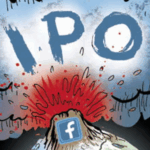 “Data-Driven Thinking” is written by members of the media community and contains fresh ideas on the digital revolution in media.
“Data-Driven Thinking” is written by members of the media community and contains fresh ideas on the digital revolution in media.
Today’s column is written by Jonathan Hsu, chief operation officer and chief financial officer at AppNexus.
Does it seem that every week we learn about the latest “unicorn” private company raising hundreds of millions of dollars in funding at valuations that exceed those of many publicly traded companies? You are not dreaming. This is our new reality.
Having navigated through this “evolution” over the past 20 years, I believe there are three fundamental forces at play: a winner-take-most dynamic, a Sarbanes-Oxley hangover and a rise of nontraditional funders.
Taken in sum, these developments have fundamentally transformed traditional life cycles governing the birth, growth and maturation of companies. We are now living in a world where investment is more concentrated and competition for dollars fiercer. Companies are waiting longer to go public, if they choose to go public at all, and the lines that once distinguished different investment models are fast disappearing.
Ad tech, which is still a relatively young vertical, was effectively born into this new environment. As a consequence, most industry actors have enjoyed the option of remaining private for a longer stretch of time than in past cycles. This dynamic, in turn, has created unintended consequences. It means that most organizations in our space exist outside the public-company spotlight – a fact that may create confusion about how to assess, compare and evaluate different businesses and, indeed, the industry as a whole.
Winner Take Most And The Search For Growth
In a world of 2% GDP growth and single-digit revenue growth for most companies, strong revenue growth of 30%-plus demands a premium. But for most private companies, the Law of Large Numbers – when the mean of a sample size gets closer to the average of the whole population as it grows – usually kicks in at around $100 million of revenue, resulting in rapidly decelerating growth rates.
However, with improved connectivity, globalization and technology platforms that enable marketplaces, a winner-take-most dynamic has taken hold, where the best performers win most of the available revenue, leaving other competitors with a diminished opportunity set. This winner-take-most dynamic is evident throughout the business world, ranging from Costco and other traditional companies to the “new” giants, such as Google, Facebook and Apple, and startups that include Uber and Airbnb. As a result, these winners can maintain strong revenue growth rates even after scale has been achieved.
The Sarbanes–Oxley Hangover
The Sarbanes–Oxley Act of 2002 (SOX) was put into place in the aftermath of the dot-com bubble bursting and high-profile corporate scandals, such as Enron, Tyco International and WorldCom.
The legislation’s noble and worthy goal was to better ensure the accuracy of corporate financial statements and that management and boards of directors acted honestly and ethically. However, one of the unintended consequences of SOX has been a dramatic decrease in the number of initial public offerings (IPO) undertaken. There were 845 IPOs in 1996, bottoming out at 27 IPOs in 2008 before normalizing at 244 IPOs in 2014, according to US Securities and Exchange Commission filings.
As a result of the legislation, the compliance costs of being a publicly traded company have increased while, more importantly, management teams and boards of directors have become more risk averse, given the increased penalties and heightened scrutiny. The punchline: Companies are waiting much longer before going public, increasing the need for larger amounts of late-stage funding and elongating the time period of being private.
Rise Of Nontraditional Funders
In the good old days, there was a clear and understandable process if you were an entrepreneur and wanted to start a company of significance.
Step 1: Through a combination of boot-strapping, sweat equity and funding from angels, friends and family, the entrepreneur gets his or her idea off the ground.
Step 2: Once a basic premise has been established and shows some promise, the entrepreneur raises a Series A round of funding from a venture capital firm, such as Kleiner Perkins Caulfield & Byers or Patricof & Co.
Steps 3 and 4: Repeat Step 2 a few more times (Series B, Series C, etc.) until the company has achieved “escape velocity.”
Step 5: Undertake an IPO and live happily ever after.
Fast forward to 2015, where the rise and participation of nontraditional funders is distorting the system.
On the early end of the spectrum, equity crowdfunding and emergence of super angels are blurring the line between startup funding and Series A/B funding. Seed checks of $10,000 to $25,000 are suddenly becoming checks of $100,000 to $250,000. Traditional venture capital firms, especially those with track records of success, are raising larger follow-on funds, skewing them to focus on later and larger funding rounds.
Then it gets interesting. Given the winner-take-most dynamic, and the fact that fewer IPOs are taking place, three distinct groups are now actively investing in private companies.
There are the traditional private equity platforms, which may include Warburg Pincus, General Atlantic and Providence Equity Partners.
There are also hedge funds and mutual funds, such as DST Global, T. Rowe Price, and Tiger Global Management. And finally, there are global strategics, including Alibaba, Google and Rakuten.
Most late-stage, “pre-IPO” rounds are now being led by one or several entities from the three aforementioned groups. Whereas late-stage rounds in the “good old days” were $50 million to $75 million in total, late-stage rounds today regularly top $100 million and sometimes can total up to half a billion dollars. Oftentimes, these amounts exceed what companies typically raise in a traditional IPO.
So what gives?
Traditional private equity platforms are simply trying to take advantage of the winner-take-most dynamic, which increasingly allows large private growth companies to reliably produce the internal rates of return that private equity platforms demand.
Hedge funds and mutual funds are trying to obtain anchor positions that will allow them to average down the overall cost basis of the equity position, once the companies go public. Interestingly, hedge funds and mutual funds also value the “strategic insight” gleaned from investments in disruptive companies, which provide an important data point as these funds evaluate their holdings in traditional, publicly traded companies. Global strategics, meanwhile, are interested in extending their own sphere of influence, as well as having an inside position to purchase the next great business to avoid their own stagnation.
My colleagues often ask me if this is a good or bad evolution of the funding dynamic. My answer is simple: It is neither good nor bad, it just is. And it’s the prevailing model in ad tech, an industry dominated by four end-to-end, full-stack platforms – Google and Facebook, which are public, AOL, which is now a subsidiary of Verizon, and AppNexus, which is private – and a crowded ecosystem of mostly private point-solution companies.
My advice to you? Embrace the world as it is, for as long as it is. Go and start the next big thing and take advantage.
Follow AppNexus (@AppNexus)and AdExchanger (@adexchanger) on Twitter.











